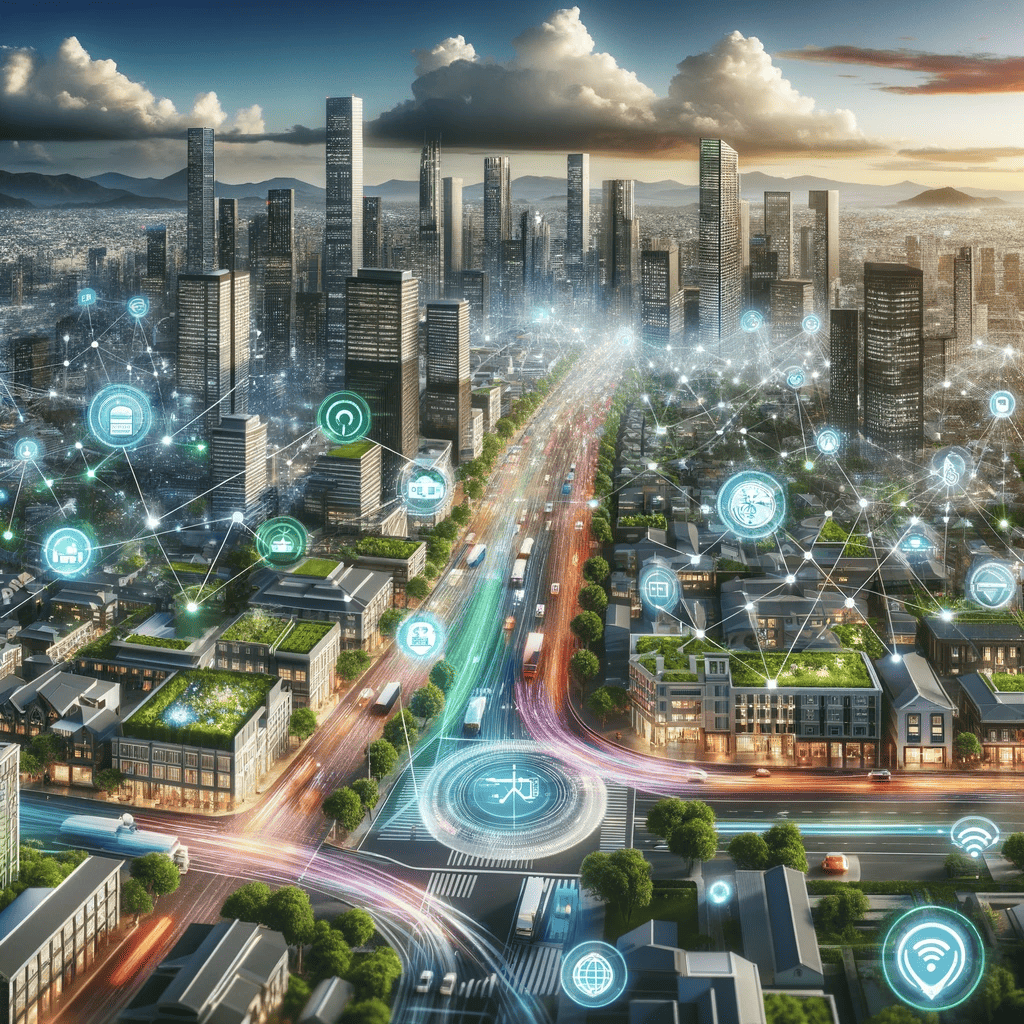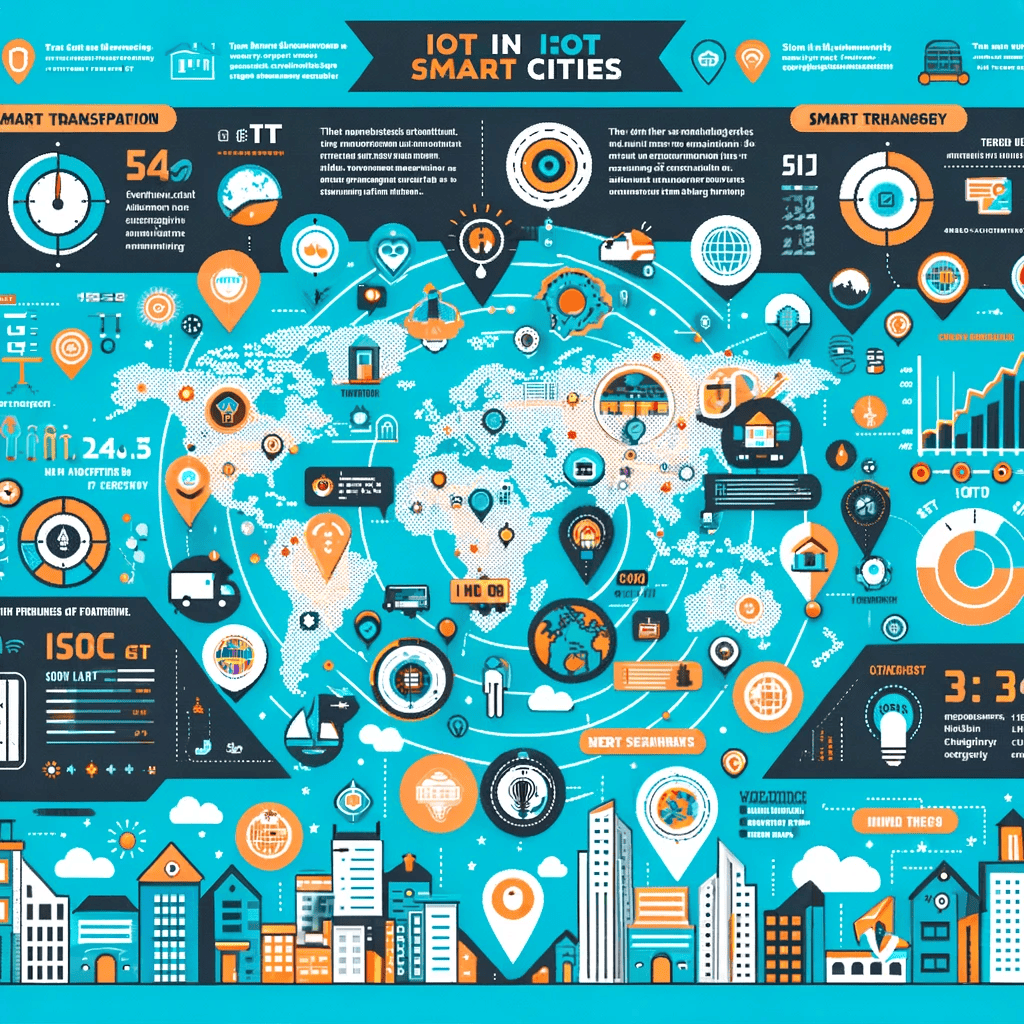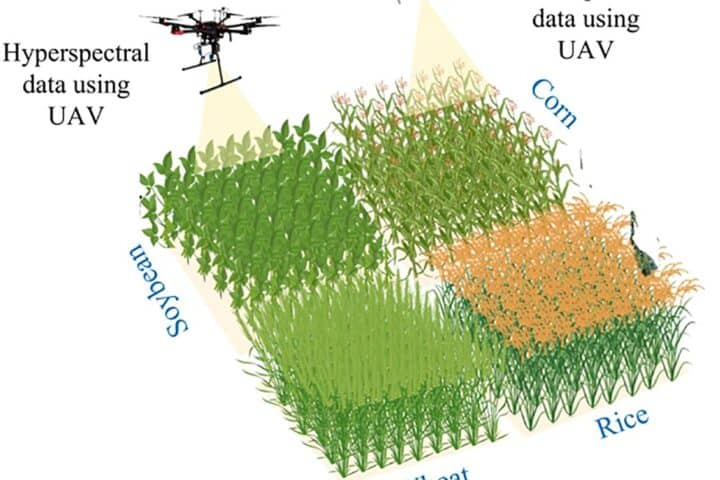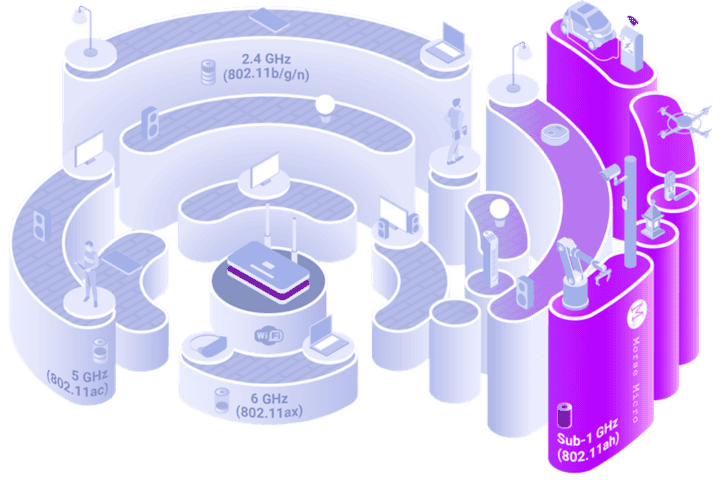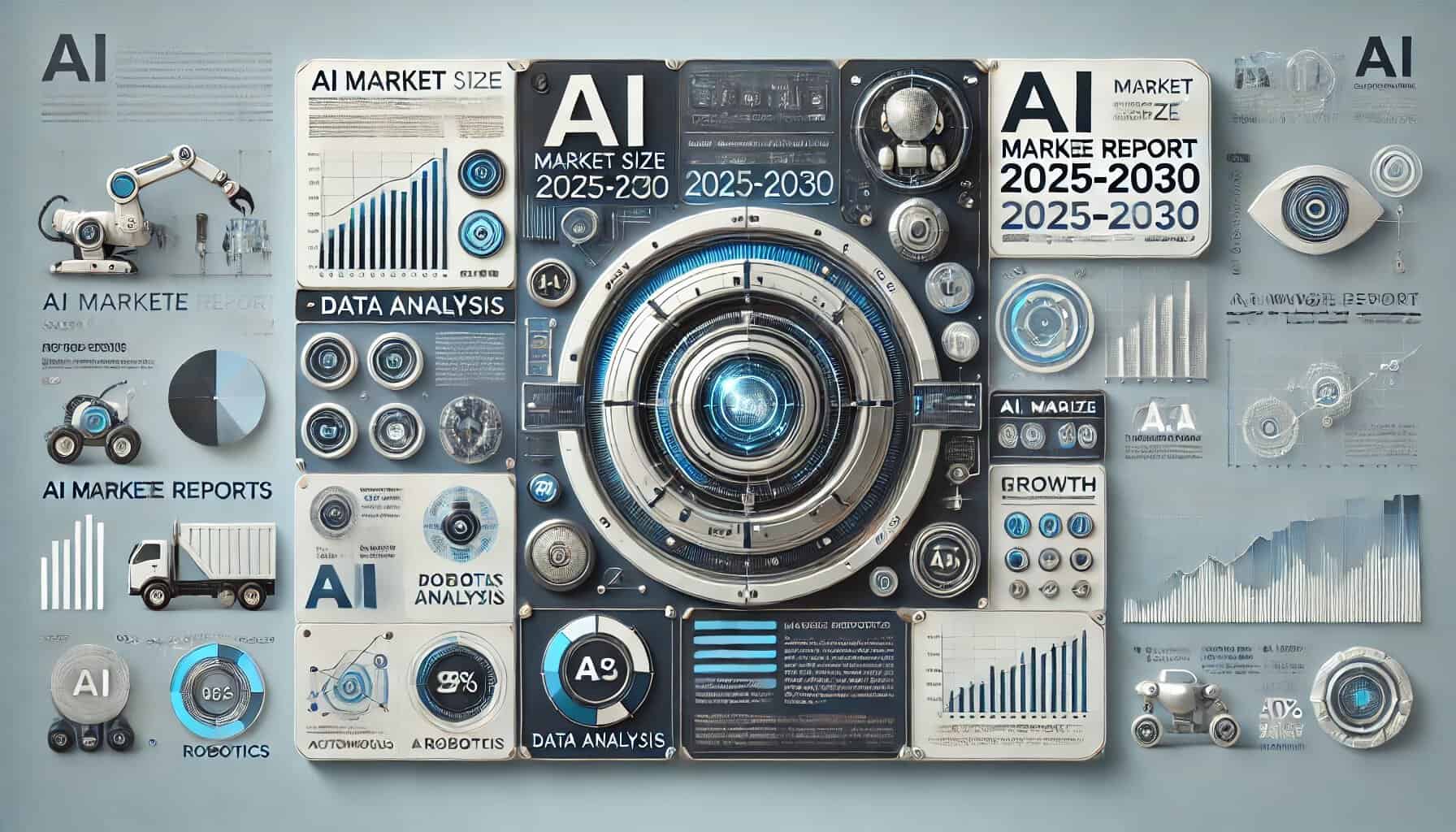Introduction: The Rise of Smart Cities
In the quest for more sustainable and efficient urban environments, the concept of Smart Cities has emerged as a beacon of innovation. These are not just cities that leverage technology, but environments where every aspect of urban life is interconnected, intelligent, and infused with technology. From improving traffic flow to enhancing public services, the impact of Smart Cities is profound and far-reaching.
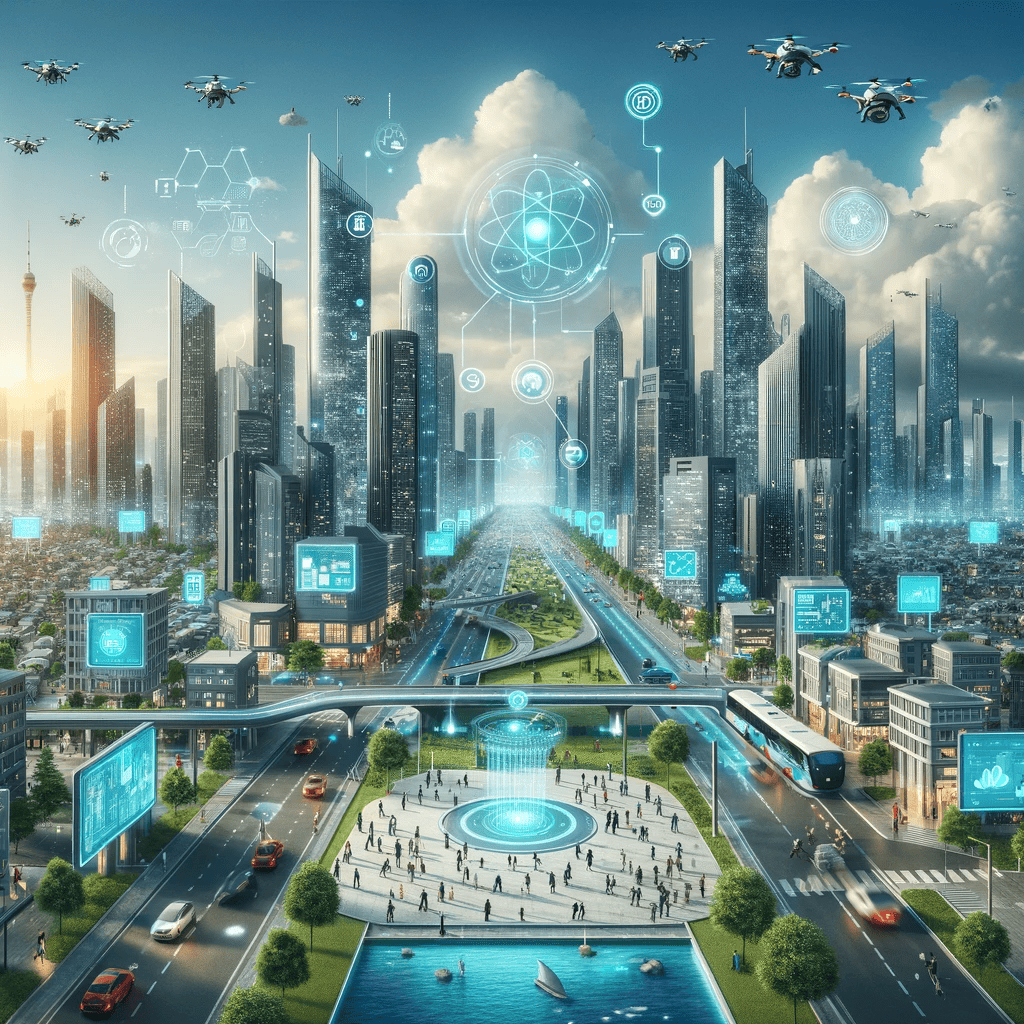
The Role of IoT in Shaping Urban Landscapes
IoT (Internet of Things) is the cornerstone of the Smart City revolution. By connecting everyday objects to the internet, IoT allows for a level of data collection and analysis previously unimaginable. Traffic lights adjust in real time to traffic flow, waste management becomes more efficient, and energy consumption is optimized, all thanks to the data and connectivity provided by IoT.
“IoT is not just a technology; it’s a paradigm shift in urban management.”
Sustainable Development: A Core Pillar of Smart Cities
Sustainable development and Smart Cities go hand in hand. By harnessing technology, these cities are able to monitor and manage their resources more effectively, leading to reduced waste, lower energy consumption, and a smaller carbon footprint. Smart Cities represent a powerful tool in the fight against climate change, making sustainability an achievable goal rather than a distant dream.
| Sustainability Goals | Technology Used | Impact |
|---|---|---|
| Energy Efficiency | Solar Panels, Smart Grids | Reduced Carbon Emissions |
| Waste Reduction | IoT-Enabled Waste Management Systems | Cleaner Cities |
| Water Conservation | Smart Water Management | Reduced Water Waste |
Embracing Digital Transformation in Urban Spaces
Digital transformation is revolutionizing every aspect of city life. From digital governance to smart healthcare, the infusion of technology is making cities more accessible, efficient, and responsive. Citizens benefit from more effective services, while administrators gain the tools they need to make informed decisions and plan for the future.
See how digital transformation unfolds in cities at Smart City Consultant.
Smart Infrastructure: Building the Cities of Tomorrow
Infrastructure is the backbone of any city, and in Smart Cities, it’s getting an intelligent upgrade. Smart buildings, roads equipped with sensors, and automated public services are just the beginning. These innovations not only improve the quality of urban living but also pave the way for future developments in urban planning.
Innovative Projects:
- Smart Roads: Charging electric vehicles as they drive.
- Intelligent Buildings: Optimizing energy use for climate control and lighting.
The Intersection of Urban Technology and Citizen Well-being
Urban technology isn’t just about infrastructure; it’s deeply connected to the well-being of city residents. Innovations like smart healthcare systems, real-time air quality monitoring, and responsive public services significantly enhance the quality of life. Residents in Smart Cities experience a higher standard of living, with technology acting as an enabler for health, safety, and overall well-being.
Impactful Changes:
- Smart Healthcare: Remote monitoring and telemedicine improve health services.
- Air Quality Control: IoT sensors provide real-time air quality updates, aiding in pollution control.
Intelligent Urban Ecosystems: Beyond Infrastructure
Smart Cities are more than the sum of their technological parts; they’re dynamic ecosystems. This holistic approach views a city as an interconnected web of systems, where data and technology work in tandem to support sustainable growth, economic development, and enhanced urban living.
“Smart Cities are ecosystems where technology and community come together for a sustainable future.” – Andrea Calderan
Smart City Solutions: Realizing the Vision of Future Cities
The vision of future cities is being realized through a range of innovative Smart City solutions. From smart traffic management systems to intelligent energy grids, these solutions are the building blocks of a new urban paradigm. They represent a leap forward in how we think about and manage our urban spaces.
| Solution | Benefits |
|---|---|
| Smart Traffic Systems | Reduced Congestion, Improved Safety |
| Intelligent Energy Grids | Energy Efficiency, Lower Costs |
Urban Data Analytics: The Backbone of Smart Decision-Making
Data is the lifeblood of Smart Cities. Urban data analytics involves the collection and analysis of vast amounts of data to inform decision-making. This approach leads to more efficient urban planning, better resource management, and a more responsive city administration.
Discover more about urban data analytics in Smart Cities at Smart City Consultant.
Smart Mobility: Revolutionizing Urban Transportation
Smart mobility is transforming the way we move around our cities. Electric vehicles, autonomous public transport, and smart traffic management are making urban transportation faster, cleaner, and more efficient. This not only improves the daily commute for millions but also significantly reduces the environmental impact of urban transport.
Key Advances:
- Electric Vehicles: Reducing carbon emissions and noise pollution.
- Autonomous Public Transport: Enhancing efficiency and accessibility.
Challenges and Opportunities in the Smart City Landscape
While the potential of Smart Cities is immense, there are challenges to be overcome. Issues like data privacy, cybersecurity, and the digital divide need to be addressed to ensure that these urban spaces are inclusive and secure. However, these challenges also present opportunities for innovation and collaboration.
| Challenge | Opportunity |
|---|---|
| Data Privacy | Development of robust privacy frameworks |
| Cybersecurity | Advancements in secure IoT networks |
| Digital Divide | Initiatives to enhance digital literacy |
Conclusion: The Continuous Evolution of Smart Cities
As we look towards the future, Smart Cities continue to evolve, driven by technological advancements and a commitment to sustainable, inclusive urban living. They are not just a vision of the future but a reality that is shaping our world today. The journey of Smart Cities is an ongoing one, marked by innovation, resilience, and a deep understanding of the complex web that is urban life.
FAQ Section
- What defines a Smart City?
Smart Cities use technology to improve efficiency, sustainability, and citizen welfare. - How do Smart Cities impact the environment?
They lead to reduced carbon emissions and better resource management, contributing to environmental sustainability. - Can Smart Cities improve quality of life?
Yes, through enhanced services, better infrastructure, and improved urban living conditions.

